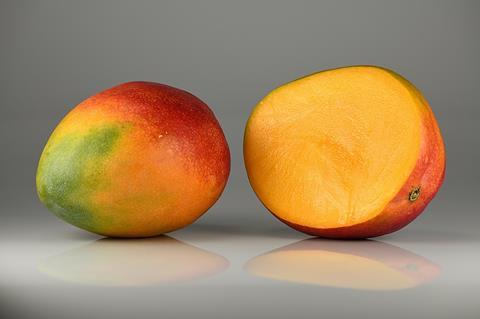A research team has successfully synthesized green copper oxide nanoparticles (CuO.NPs) from Mangifera indica (M. indica) leaf extract. The CuO.NPs showed potent activity against gram-positive and negative bacteria, as well as fungicidal effects on persimmon fruit pathogens.

This advance holds significant value for agriculture, offering a biocompatible and eco-friendly method to combat phytopathogenic diseases. Future applications of this technology could revolutionize disease management in crops, potentially enhancing agricultural productivity and sustainability.
READ MORE: The diverse industrial applications of microbial pectinases
READ MORE: The hidden symbiosis between blueberries and ericoid mycorrhizal fungus
A sustainable increase in agricultural production is needed due to a predicted doubling in global crop demand from 2005 to 2050. However, the rapid propagation of plant pathogens threatens the sustainability of the food supply. Crop production relies heavily on synthetic agrochemicals to combat plant diseases, but this approach contributes to environmental harm and pathogen resistance.
Eco-friendly disease control
These issues underscore the need for innovative, eco-friendly disease control methods. There has been a lot of research done recently on the green synthesis of various antimicrobial nanoparticles. Copper, a high-performance metal used in agriculture to combat pathogenic attacks, has received less attention.
A study (DOI: 10.48130/frures-0024-0015) published in Fruit Research on 03 June 2024, aims to synthesize eco-friendly and economically viable M. indica-mediated CuO.NPs to develop sustainable, biocompatible solutions for phytopathogen management.
Firstly, M. indica leaf extract was employed to synthesize copper oxide nanoparticles (CuO.NPs), and the synthesis was confirmed by a color change from yellow to copper-reddish. Then, the spectral and morphological characterization biosynthesized were observed using FTIR, XRD, and TEM. The FT-IR analysis verified the existence of functional groups such as C-N and O-H in the green synthesized CuO.NPs, which possess the potential to effectively inhibit pathogenic growth. XRD was carried out to demonstrate the crystalline nature and size of nanoparticles using the Scherrer formula.
Antibacterial activity
The TEM analysis indicated that the CuO.NPs display a spherical morphology and are effectively dispersed without aggregating, with sizes ranging from 40−80 nm. Further, the antibacterial activity of CuO.NPs were evaluated at different doses (30, 60, and 100 μg·mL−1) both in vitro and in vivo. The CuO.NPs exhibited significant antibacterial activity against Escherichia coli (E. coli) and Staphylococcus aureus (S. aureus), with higher doses showing greater inhibition zones.
The antifungal activity in vivo was tested on Diospyros kaki (persimmon fruit), where CuO.NPs significantly reduced disease incidence. Additionally, the nanoparticles also demonstrated strong antioxidant activity, comparable to ascorbic acid. These results suggest that green synthesized CuO.NPs have substantial potential for use as eco-friendly, cost-effective antimicrobial agents in agriculture.
Nanoparticles in agriculture
According to the study’s lead researcher, Cheng Song of West Anhui University: “This work offers a new avenue for additional investigations of metallic nanoparticles in vital domains like phytopathology and agriculture. The use of this environmentally friendly method of biogenic nanoparticles may help to reduce the fungal infection in sweet fruit and improve the socio-economic standing of farmers.”
In summary, this research showcases the green synthesis of CuO.NPs using M. indica leaf extract. Characterized by FTIR, XRD, and TEM, the CuO.NPs demonstrated significant antimicrobial activity against E. coli and S. aureus, fungicidal effects on R. oryzae, and strong antioxidant properties.
These findings highlight the potential of eco-friendly CuO.NPs as cost-effective antimicrobial agents in agriculture. Future research should focus on optimizing synthesis, expanding applications, and scaling up production to enhance sustainable crop protection.







No comments yet